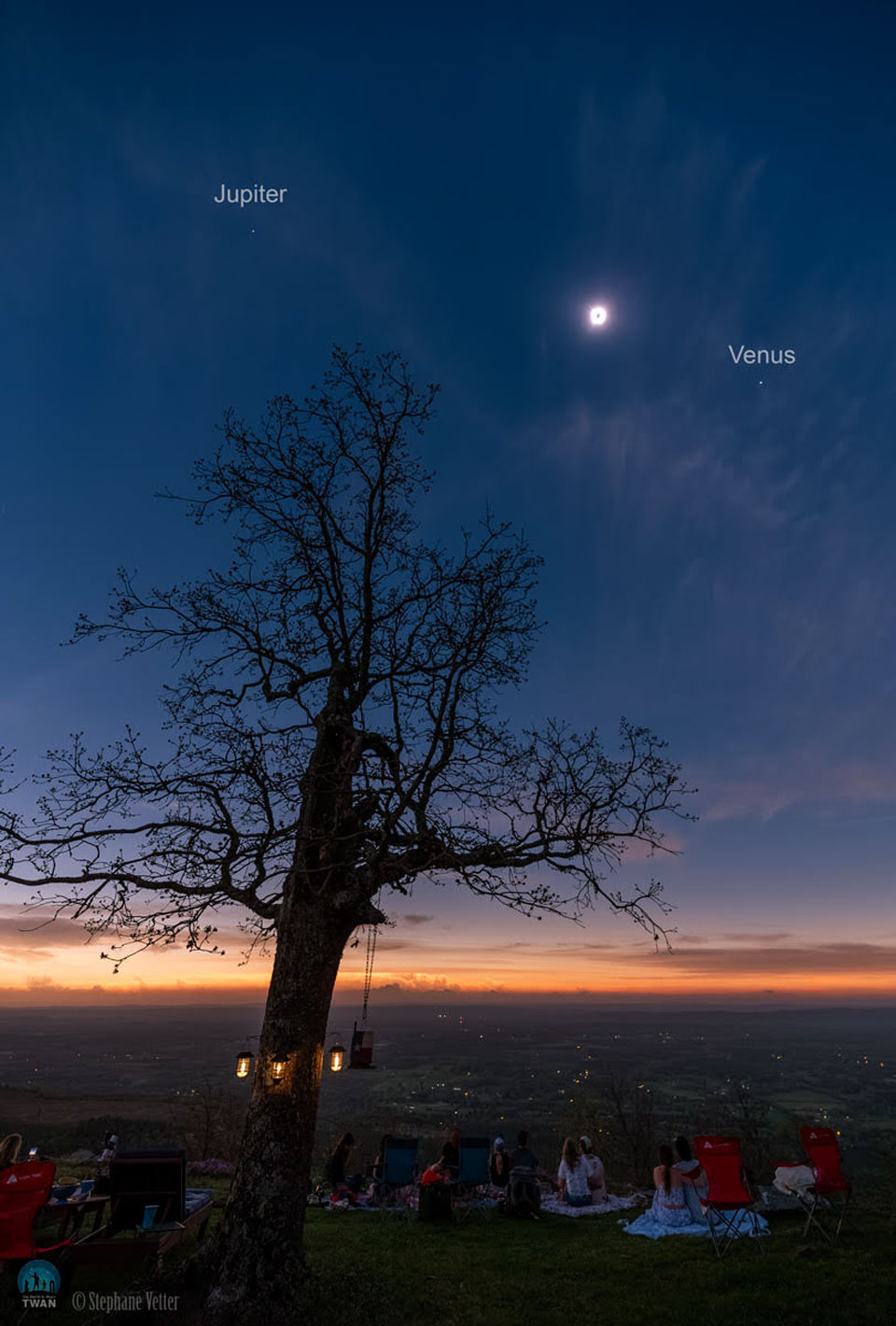Post
by wilddouglascounty » Thu Apr 11, 2024 1:54 pm
This conversation about digital processing and imagery differences shrinking or enlarging high contrast components of an image brings to mind my experience of the eclipse only a few miles away from where this photo was taken.
The eye, occipital lobe visual processing part of the brain and other processing centers do a much more refined image generation than digital imaging is capable of doing, and viewing an eclipse really brings out these differences. The brain is incredible in creating a continuum of brightness, for instance, compared to digital images. The orange-yellow prominence located at the 5 o'clock position during totality, for instance, was hugely more prominent in person than any digital image that I've seen, due to the eye being able to process the incredible difference between the dark disk of the moon, the surrounding dark sky, and the brightness of the prominence, much better than digital processing, which just maxed it out as a depiction of white over-exposure or dimmed everything else down to where you could see the colors of the prominence.
As the moon approached totality, the eye also depicted the moon as having more of a 3 dimensionality to the moon; an illusion of course, but nevertheless a palpable sensation that is lost in all digital imagery. Finally, when the moon was exiting the sun's disk and the Bailey's bead/diamond ring spread to a wider, brighter arc, the beam of light that shone down through the darkness of the surrounding darkened landscape was like a giant spotlight shooting down from the sun to the ground. Perhaps it was the same artifact that created super sharp shadows around totality, but once again, the firsthand experience of this super-focused beam of light shooting down to the ground in the surrounding darkness was something that no digital depiction that I've seen has come close to capturing.
Cameras shooting images of the milky way make me wish I could see the clouds and dust lanes as clearly as they do, but then I see the eclipse and realize that the eye and brain still have way more processing power than that little CCD behind the lens.
 Planets Around a Total Eclipse
Planets Around a Total Eclipse
